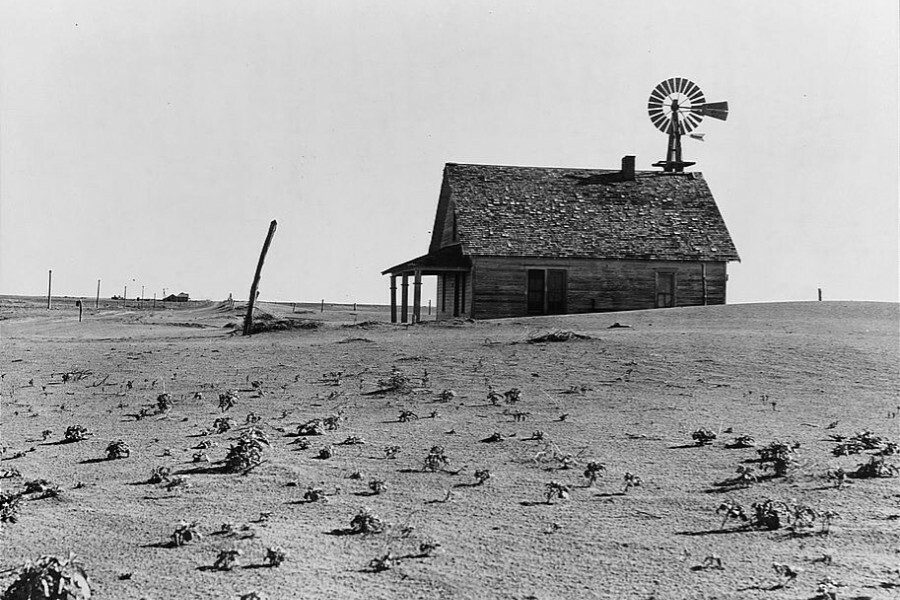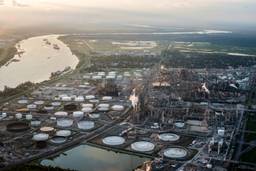Coffee, Avocados, Chocolate and Other Foods Climate Change Could Take Off The Menu
Pat Thomas

What will we eat in the future?
What was once a rhetorical musing has now become the critical question of our time as scientists grapple with tricky questions about life — and larders — in a climate-changing world.
Agriculture is both a key contributor to climate change and one of the sectors most vulnerable to those changes. That fact alone should send an urgent message that the way we farm has to change. Instead, we see a stubborn cadre of policymakers, tech companies and big agribusinesses that believe business as usual can be maintained with only a few tweaks to the system.
The science, however, tells a different story.
Earlier this year a report from the United Nations Intergovernmental Panel on Climate Change (IPCC) warned that the world’s land and water resources are being exploited at “unprecedented rates,” and that topsoil is disappearing between 10 and 100 times faster than we can replenish it.
As climate change begins to bite and we experience floods, drought, storms and other types of extreme weather that deeply disrupt the global food supply, feeding ourselves is going to get harder.
Some of the world‘s most vulnerable places are already bearing witness to these effects. After decades of decline, world hunger and malnutrition has, since 2014, begun to climb steadily again. A 2016 study found that by 2050 the effects of climate change on diet will be responsible for 529,000 additional and avoidable deaths.
If you ever doubted that farming and food is a climate change issue, the rapidly mounting science is begging you not to doubt it anymore. Consider the studies published just this year:
• A University of Minnesota-led study noted that, while some places may be (temporarily) better off as the climate shifts, the long-term picture is grim. The world’s top 10 crops — barley, cassava, maize, oil palm, grapeseed, rice, sorghum, soybean, sugarcane and wheat — supply a combined 83 percent of all the calories produced on cropland. Climate change has already affected production of these key energy sources and some regions — notably Europe, Southern Africa and Australia — are faring far worse than others.
In the United States the study found that in eastern Iowa, Illinois and Indiana, climate change has been reducing corn yields even as it marginally boosts them to the northwest in Minnesota and North Dakota. There was a similar pattern for soybeans with reductions moving up from the south and east parts of the country, where slightly more warming has occurred than in states farther north. The changing climate is also reducing overall yields of other important crops, such as wheat and barley.
• A comprehensive synthesis of climate change impacts on the nutritional quality of our food found that, over the next 30 years, climate change and higher CO2 could significantly reduce the availability of critical nutrients, such as protein, iron and zinc by 19.5 percent, 14.4 percent and 14.6 percent, respectively.
• A Rutgers University study found that climate change may reduce the ability of soils to absorb water in many parts of the world. That could have serious implications for groundwater supplies, food production and security, stormwater runoff, biodiversity and ecosystem stability.
• The Intergovernmental Science-Policy Platform on Biodiversity and Ecosystem Services (IPBES) is a panel studying the benefits of nature to humans. It reports that while there is three times more carbon in the soil than in the atmosphere, that carbon is rapidly being released by deforestation and poor farming practices. This, in turn, is fueling climate change — and compromising our attempts to feed a growing world population.
• Australian scientists at the University of Tasmania combed through United Nations data from the past half century, concluding that globally an increase in extreme weather events is largely to blame for a rise in major food “shocks.” Overall, extreme weather was responsible for over half the times when crop growth ground to a halt, posing a major threat to global food security.
Food not crops
The University of Minnesota-led study, cited above, found that climate change is reducing consumable food calories by around 1 percent yearly for the top 10 global crops. This may sound small, but it actually represents some 35 trillion calories each year — enough to provide more than 50 million people with a daily diet of over 1,800 calories — the level that the UN Food and Agriculture Organization says is essential to avoid food deprivation or undernourishment.
These figures are so staggering it’s hard to wrap our heads around just what they mean for the foods our families consume every day. Most of us understand the world in terms of food not crop yields. So apart from those top 10 staple crops — which are often incorporated as ingredients in a variety of everyday foods such as ready meals, bakery items and snacks — what other food favorites are starting to feel the climate squeeze? The list may surprise you.
• Coffee: At least 60 percent of current coffee species face extinction, according to a 2019 study. Coffee trees don’t thrive in extremes of temperature. They prefer the relatively cool mountainside regions of the tropics. In countries like Brazil, warmer temperatures and more prevalent weather extremes are beginning to affect yields. Climate change is also threatening native coffee trees that grow in the wild in Ethiopia. These are a valuable source of genetic diversity, which growers need to breed new strains of the plant that can thrive as the planet heats up.
• Tea: Most of the world’s tea is grown in China and India — both large regions with diverse climates. Changes in climate influence the taste and quality of tea. But they also, according to a 2019 report in the journal Nature, affect the quantity of tea that farmers can grow. In the rich tea-producing regions of southern China, overall rainfall is increasing and instances of heavy rain that can damage tea crops are becoming more frequent. In Assam in India, intense rains cause waterlogging and soil erosion that damages root development and reduces yield. At the other extreme, heat is also causing problems. Warmer temperatures mean insects that attack tea plants can survive the winter and reproduce in greater numbers. Plantation managers in Assam are already reporting pest management problems with their tea plants.
• Orchard fruits: For U.S. apple crops, hotter spring weather is causing an increase in diseases like fire blight (particularly problematic for organic farmers who don’t use antibiotics). Intense sunlight can cause burn marks on the skin, which often means the apples can be sold only at a reduced price for the farmer, for juicing or pulp. Japanese scientists have found that climate change is making popular apples like the Fuji less crisp and less sweet. Other orchard fruits like cherries, plums, pears, and apricots and peaches) benefit from exposure to temperatures below 45° F (7° C) each winter. Skip the required cold, and fruit and nut trees struggle to break dormancy and flower in the spring. This can mean a drop in both the quality and quantity of fruit that’s produced.
• Avocados: This leathery looking fruit may look tough on the outside, but to reach its peak of yumminess it needs temperatures that are neither too hot nor too cold. Avocado crops in California have already suffered from heat waves and drought. One 2017 study led by the University of California, Merced, estimates that climate change will cut California avocado production in half by 2050. Mexico, which provides the U.S. with 80 percent of its avocados, is currently caught in a vicious downward spiral. Climate change is affecting its crops, but farmers are under pressure to grow more to keep up with surging global demand. Expanding their cropland through deforestation is contributing to the climate changes that are already threatening them.
• Bananas: As with other crops, some countries — including Ecuador, Honduras, and a number of African countries — may see a temporary boost in banana crop production as global temperatures rise. But a recent report suggested that 10 countries, including the world’s largest producer and consumer of bananas, India, and the fourth largest producer, Brazil, will see a significant decline in crop yields.
• Chocolate: Some observers claim that climate change has pushed us to the brink of ‘peak chocolate.’ Most of the world’s chocolate is grown by smallholder farmers in Africa. But the combination of changing weather and crippling poverty means Africa’s cocoa farmers have had to switch to other crops to survive. In four decades, the amount of land available for growing cocoa has dropped 40 percent. In the next 40 years, the temperature in Ghana and Cote d’Ivoire, where 70 percent of cocoa is grown, is set to rise by 2°C, which would make it too hot and dry for cocoa trees. The world will likely start feeling the shortfall by 2020 when, according to a report by the Earth Security Group, world cocoa demand is set to outstrip supply by more than a million tons.
• Honey: Our honeybees are already under threat from Colony Collapse Disorder, and climate change is piling on the pressure. According to a study by the U.S. Department of Agriculture, rising carbon dioxide levels are decreasing the protein levels in pollen. This means the bees aren’t getting enough nutrition, which threatens their ability to reproduce and can cause early death. Warmer temperatures and the earlier arrival of spring means trees and plants are flowering before bees have grown out of their larval state. This means fewer worker bees to pollinate our fruits and vegetable crops, to collect pollen for the hive and to make honey.
• Maple syrup: Unpredictable, yo-yoing weather is shortening the ‘sugaring season —the period just before budding when the temperatures are mild enough to trigger a process where the trees turn stored-up starches into sugar sap. Too-hot temperatures produce a stress reaction in the trees that causes them to put more energy into producing seeds than into producing sap — and the sap that is produced under these conditions is not as sweet. This means it can take twice as many gallons of sap to produce a gallon of syrup.
• Peanuts: When it comes to growing conditions peanut plants can be fussy. They grow best if they have up to five months of consistent warmth, combined with about 20 to 40 inches of rain. But the rain has to taper off by the harvest season or farmers can find it hard to pull the peanut pods out of the ground. Too hot, too cold or too wet and crops can fail. Peanuts of course are legumes. According to a recent study of global legume and non-staple vegetable production, if greenhouse gas emissions continue on their current trajectory, peanut yields could fall by 35 percent by 2100 due to water scarcity and increased salinity and ozone.
• Seafood: It’s not just land-based harvests that will fail as climate change bites. As air temperatures rise, oceans and waterways also heat up and creatures who thrive in the cold, such as lobsters and salmon, can begin to decline. Warming seas also raise the risk of toxic marine bacteria, like vibrio, in raw seafood, like oysters or sashimi. Add these problems to that of obscene over-fishing and it might not be long before seafood is off the menu.
Meeting the challenges
Today, disruptions in the food supply chain can be found almost everywhere food is grown. The sheer scale of it is almost too much to take in, and some find it paralyzing.
But regenerative farmers and ranchers are taking action. They are rebuilding soil organic matter, restoring degraded soil biodiversity, improving the carbon-storage capacity of the land, diversifying their crops, planting varieties that are hardy and resilient.
Regenerative farmers and ranchers are reducing the use of energy-intensive chemical add-ons, including fertilizers and pesticides, making use of cover crops, crop rotations, compost and animal manures. They’re grazing and pasturing animals on grass and raising them in more naturalistic conditions.
Regenerative farmers and ranchers are thinking systemically. They’re moving beyond headline-grabbing techno-fixes like GMOs and synthetic biology to solutions that acknowledge the deeply interconnected nature of farming and the need to think and act systemically.
The choices we make now will decide what we can eat in the future. If we stay on our current path, doubling down on intensive, wasteful, polluting industrial farming, we may have no choice but to accept a world where farmers don’t matter and where we survive on a grim diet of techno-burgers, ultraprocessed GMO snacks and fake foods grown in industrial vats.
But change the rules of the game and our choices begin to multiply. It may not be possible to stop all the effects of climate change — we’ve let it go on for too long without addressing its biggest core causes: energy generation, industry and transport. But by acting on a new vision for food and farming, in line with the goals of the Green New Deal, we can begin to mitigate the worst of it and work with the rest to ensure a more stable future for everyone.
The farmers who are undertaking this task, including those who are members of the U.S. Farmers & Ranchers for a Green New Deal, are real climate heroes. We should be doing everything we can to support them.
Editor’s Note: This is a lightly edited version of an article that was originally published on the blog of the Organic Consumers Association. You can read the original article here.




